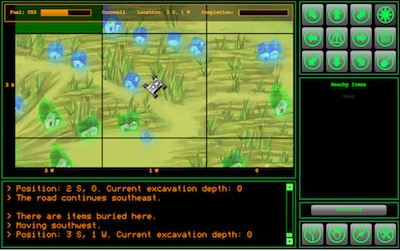Sign Up to Play Vanished, A New Alternate Reality Game
/https://tf-cmsv2-smithsonianmag-media.s3.amazonaws.com/filer/20110520110721postcard-1.jpg)
Game On. Registration has now begun for the new Smithsonian-museum based alternate reality game, Vanished.
Developed by the Massachusetts Institute of Technology (MIT) with funding from the National Science Foundation, the game encourages students, ages 11 to 14, to kick their critical thinking skills into high gear to solve a mystery . The 8-week alternate reality game engages students to try to figure out the cause of an environmental disaster using games, puzzles, online challenges, museum visits and scientific deduction. While the gaming experience is online, players are also encouraged to investigate their immediate environs by visiting Smithsonian and Smithsonian affiliate museums to find information that will help them complete the game.
In online video conferences, Smithsonian scientists—forensic anthropologist Kari Bruwelheide, paleo-ecologist Conrad Labandeira, geologist Elizabeth Cottrell, entomologist David Roubik—will interact with the players to help them along in the game, as well as to give them a realistic idea about what it's like to be a professional in the field, debunking some of the more pervasive cultural stereotypes. (There are more women in the field than you might initially think and yes, they do have hobbies and outside interests like the rest of us.)
"We want kids to go in and feel like investigators and scientists," says MIT's Caitlin Feeley, the game's project manager. "This online mystery-solving community is a lot like a scientific community."
Gamers will pool and discuss their ideas on moderated online forums, as a group they can challenge their own assumptions and rethink hypotheses and collectively solve clues.
Sidebar mini games available on the site teach scientific concepts that can be used to help solve the larger mystery. For example, in Rover, players can explore a virtual archaeological site and digitally dig up and examine artifacts in the Smithsonian's collections, using observations to interpret data.
A few years ago the Smithsonian approached the Education Arcade at MIT, a group focused on finding innovative ways to use digital gaming as a teaching tool, about doing a game on museum education. "It gets kids into museums with purpose," says Feeley.
"Sometimes there are efforts to get kids engaged with museums that don't actually get kids to think about why the exhibits are important or get them to integrate that into other things. They'll do something like go on a scavenger hunt, write a report on what you saw—that kind of thing," she says.
"In a lot of ways, solving a mystery, even if it's a fictional mystery, teaches you a lot more about how to be a scientist than memorizing some stuff and copying it down on a test next week. Sometimes if kids don't get a good science teacher, they get the unfortunate impression that science is just about memorizing a bunch of stuff. Why would you want to do that? We want kids to understand that it's about problem solving, investigation," says Feeley. "You make some hypotheses and if they don't bear out, you take your investigation in another direction based on what you've learned. That's true for mystery solving and it's true for science."
Visit Vanished to sign up. The free games begin April 4, 2011, all you need is a computer with an internet connection.
